A Wardrobe for Wellness
Typical hospital clothing is designed more for the convenience of the hospital staff than for the comfort and dignity of the patient. Hospital Hacks proves that the two are not mutually exclusive.
‘I’m lying in bed and my pants keep rolling up to my knees. I don’t have a shirt. This is terrible,’ said Emily Bonnell, recounting an unexpected hospital stay. ‘I called my sister and said, “Let’s fix it.”’
‘I was texting her 24/7,’ says Molly Bonnell. ‘We have been in and out of hospitals our whole lives, so Emily was my test user for everything.’
Through their correspondence, Molly developed Hospital Hacks, a graduate project for Parsons School of Fashion inspired by their shared experience of having cystic fibrosis, a hereditary disease that causes chronic and fatal lung infections.
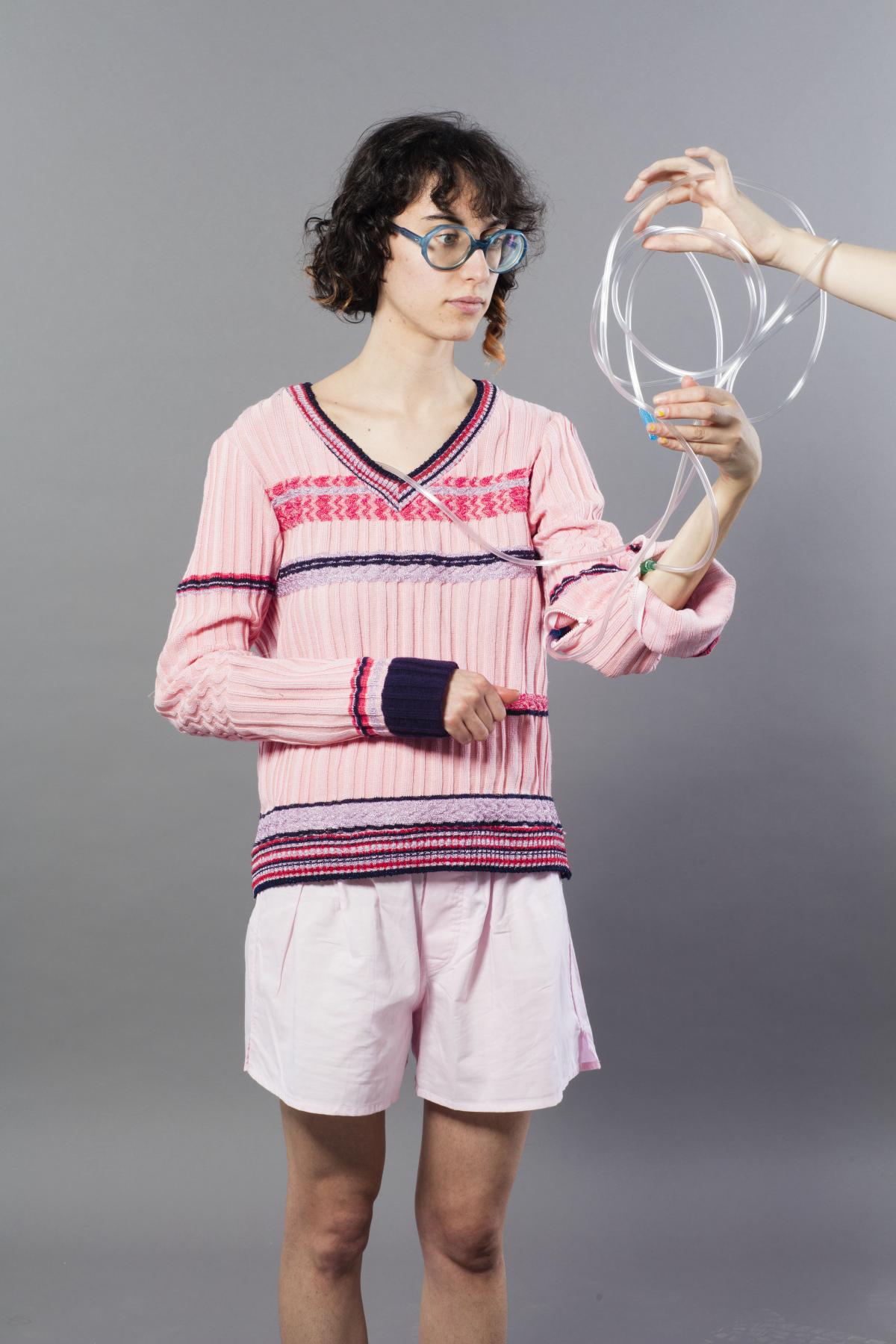
Each sleeve of this sweater contains a plastic two-way zipper. It can be opened in different sections to provide a variety of access points or it can be completely unzipped from wrist to armpit to allow an IV tube to be removed. This pink sweater is Emily’s favourite because it is ‘warm, cosy and happy’, and works for her needs in the hospital. (Photo: Brandon Petulla)
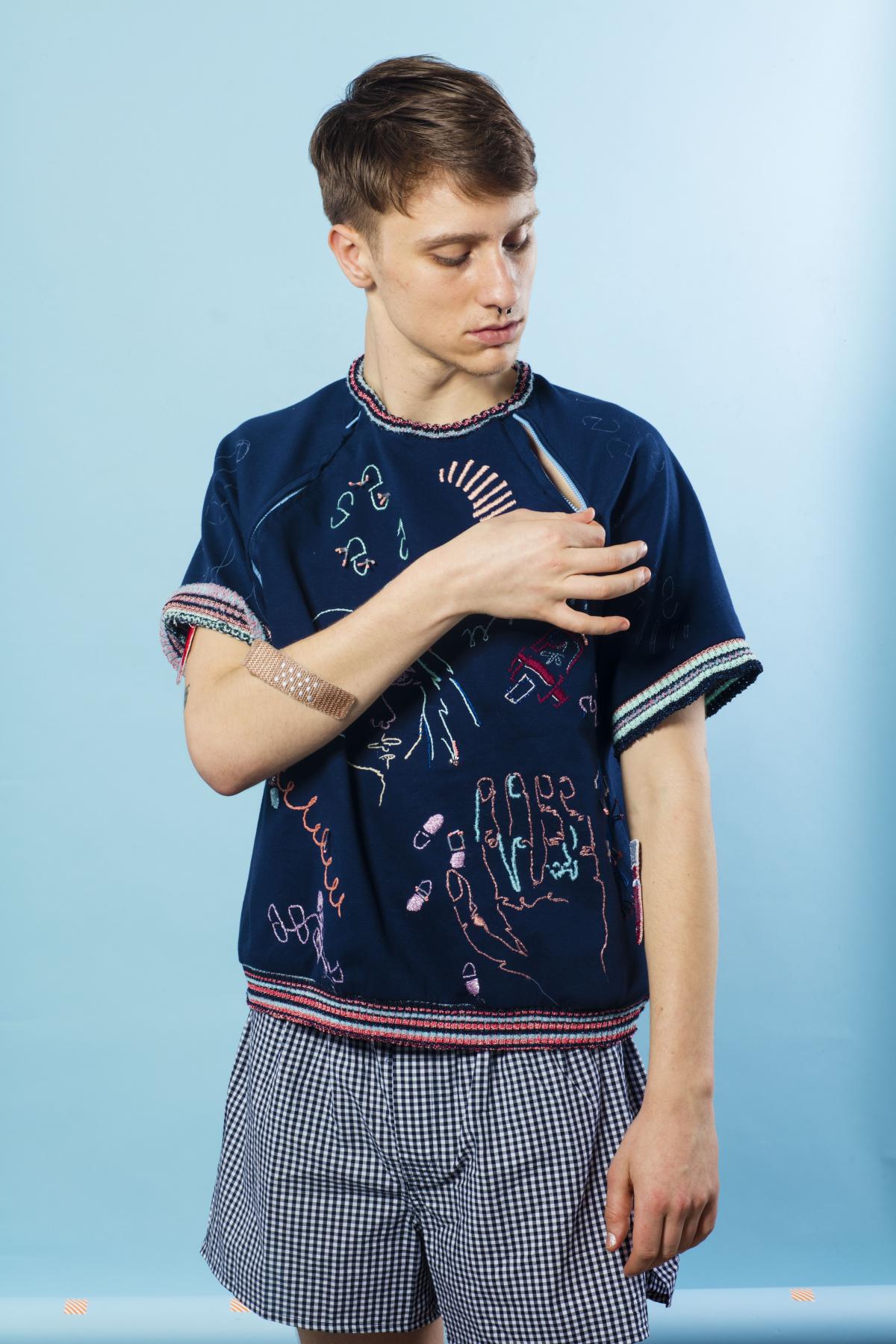
The raglan sleeve of this sweatshirt has a zipper in each shoulder seam to create points of entry. The jersey is embellished with ‘sick kit’ embroidery. (Photo: Brandon Petulla)
Molly explained that they both used to cut holes in their clothes to receive IV treatments. ‘We would be told to cut a long tube sock to hold the tube on our arms, but it would get caught on everything. There was nothing to fit this need, not just for us but for thousands of people.’
You seem to enjoy a good story
Sign up to our infrequent mailing to get more stories directly to your mailbox.Frustrated with the lack of solutions, Molly began to research how to create garments that would serve patients with cystic fibrosis and other diseases. ‘If regular clothes offered the same type of access to the body, then you wouldn’t need to wear a hospital gown.’
Her project Hospital Hacks was realised in the form of a ‘sick kit’ of everyday garments such as T-shirts and sweaters which suit the requirements of hospital use but can be customised to meet each individual patient’s needs.
Hospital Hacks clothes don’t look or feel like common hospital garments, but the real difference with these is that you can bring the clothes home and wash them, and they become your own.
‘I researched which parts of the body they need access to in the hospital. With cystic fibrosis, diabetes, cancer and breast cancer, the access points are usually from the waist up, so I worked on creating ports where those points would be.’
During the year-long development phase Molly’s design process was influenced by testing the products with a wide range of participants, both short-term patients and those who were in and out of the hospital on a regular basis. She also learned a great deal from doctors, nurses and other medical professionals.
For example, Velcro’s flexibility and ease of use might make it seem like the ideal garment closure for patients with limited mobility, but Molly discovered from nurses that hook-and-loop material harbours bacteria. Metal zippers and clips were also eliminated because, ‘you can’t use metal, as it can’t go in an MRI or X-ray machine.’
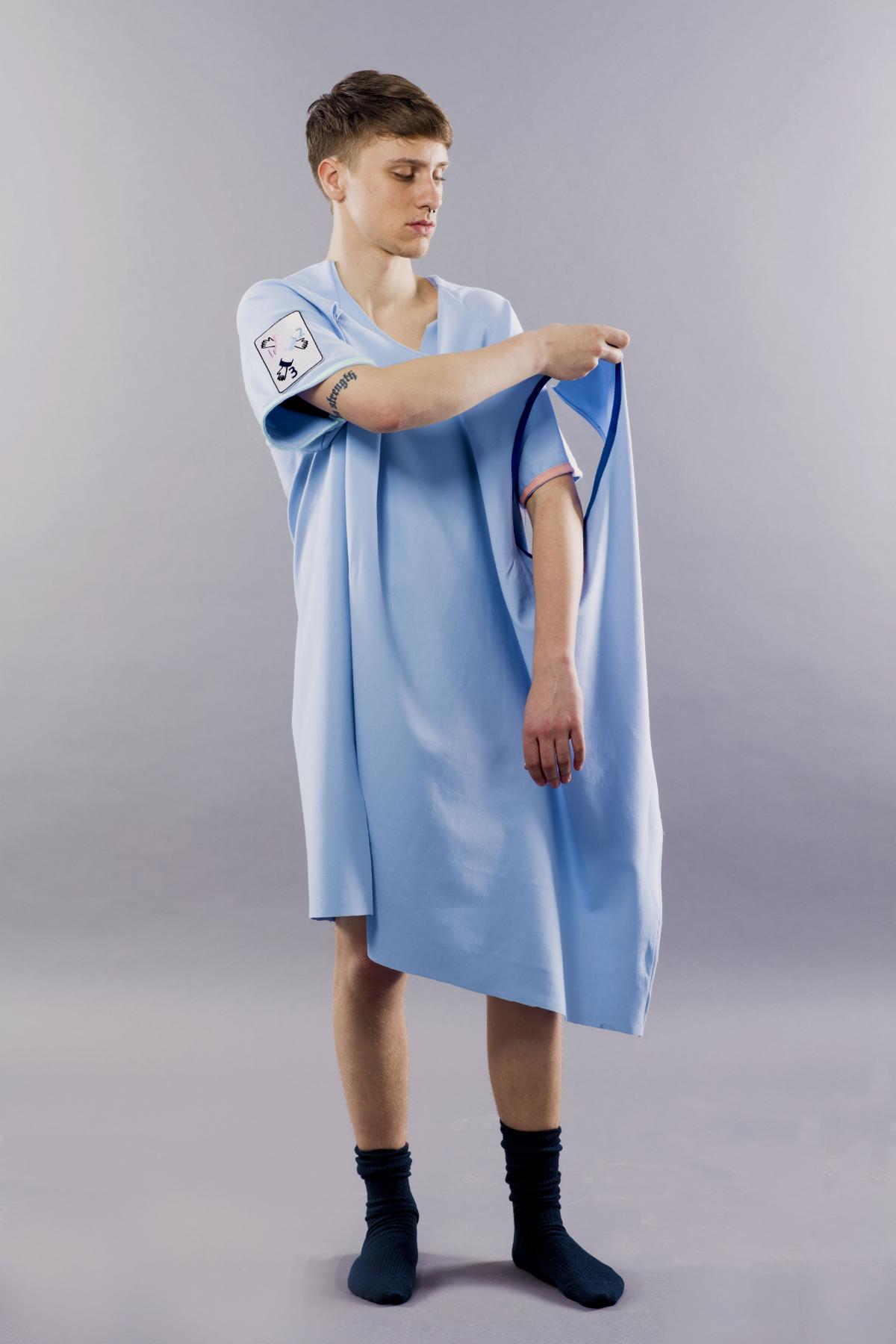
Inspired by patients who wear a second hospital gown to cover their backsides, this stretch jersey hospital gown has no closures in it. It is put on like a jacket and wrapped around the body. (Photo: Brandon Petulla)
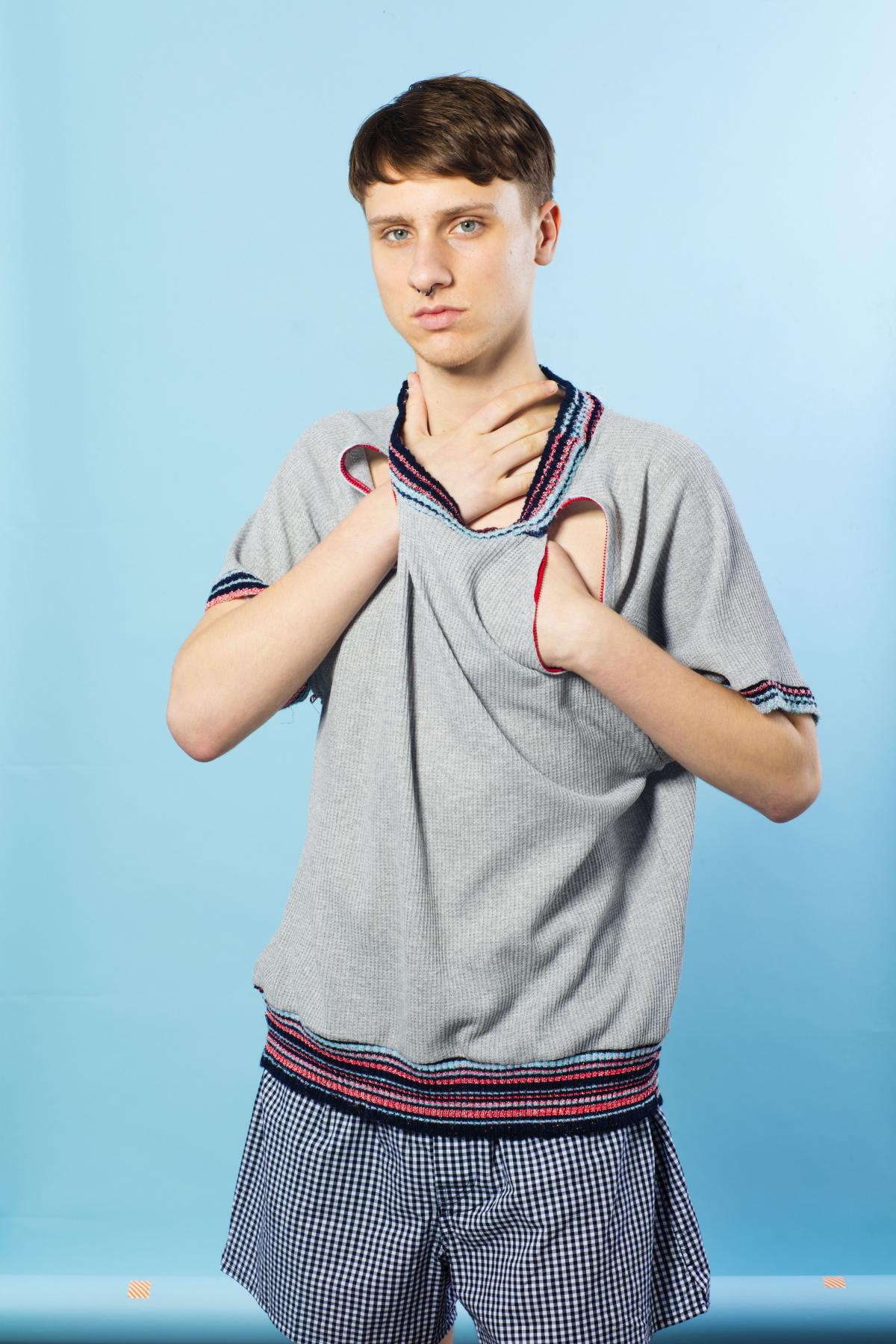
(Photo: Brandon Petulla)
In the end she settled on a string-tie closure, but determining the proper length took some time, ‘If the strings are too long they become a choking hazard, and if they are too short you can’t actually tie them.’
Fibre content was also a tricky issue to navigate, since some patients are allergic to certain fibres. ‘You can’t make clothes that make people sick. I used a lot of knit blends, some wool and some natural fibres.’
Her research made her consider how clothing should be constructed to stand up to hospital’s industrial washing machines. All of the garments had to have reinforced seams so they would not come apart with repeated cleanings, but the seams could not be so thick as to cause bedsores and bacterial infections. Using a jersey stretch stitch proved to be helpful in accommodating a wider range of body types.
Not that Molly wanted her collection to reflect the institutional system of ‘one size fits all’ care. She also packed each Hospital Hacks kit with craft projects that allow patients to personalise their clothes. Her design aesthetic appropriates traditional medical imagery such as pill bottles and stethoscopes. ‘There was a lot of pink,’ she says, ‘and the tops of pill bottles that said “Do not crush”, “Swallow whole” or “Take with food”. These things are not necessarily seen as positive but I’m going to say “no”. I am going to wear these on my body to show this is who I am.’
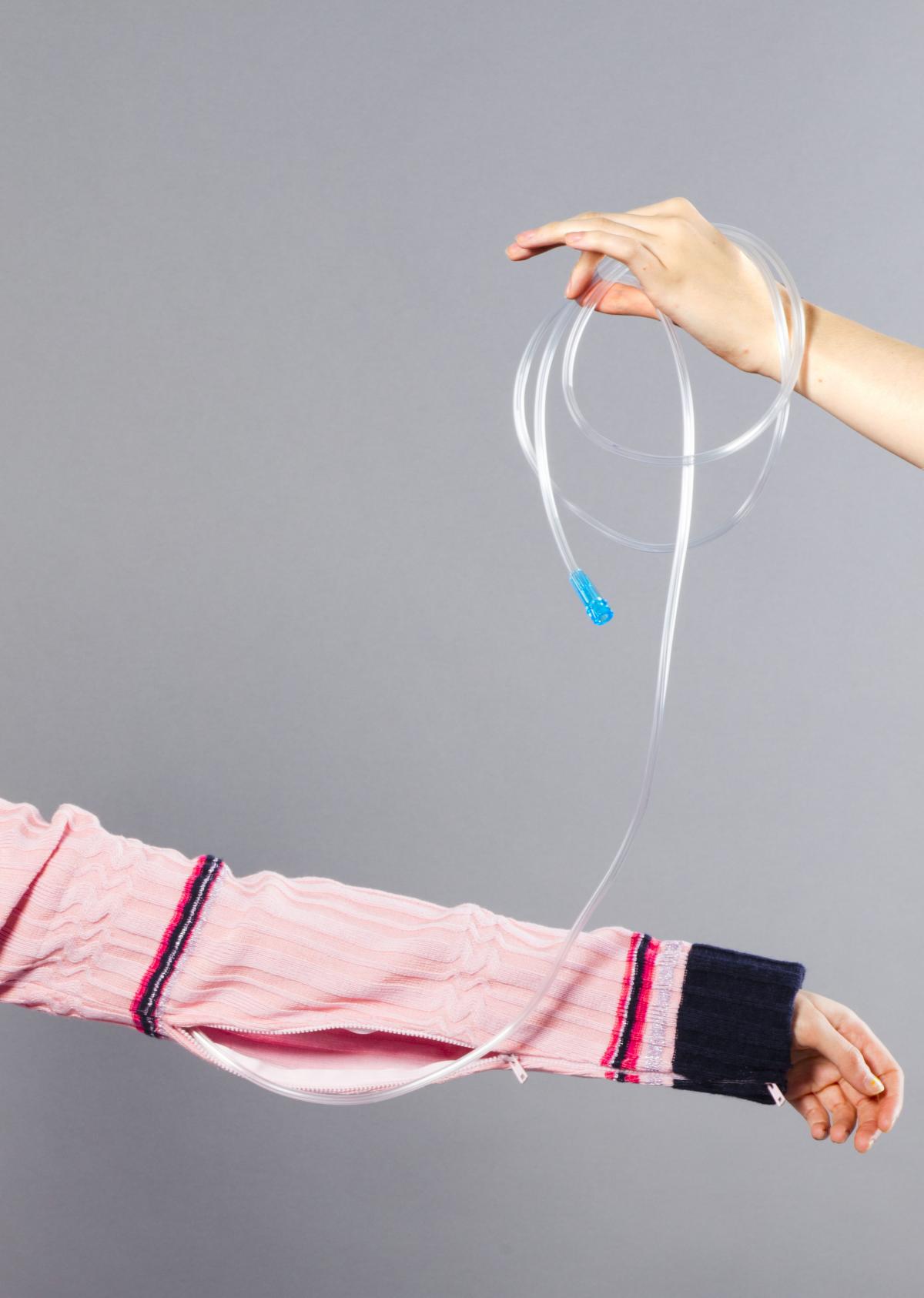
(Photo: Brandon Petulla)
These expressions subvert typical hospital objects into a celebratory craft, contrasting with the usually sterile nature of their environment and giving patients a chance to humanise their experiences while also giving them something to do with their hands during their stay or afterwards at home. Molly would like to see the kit used in art therapy circles, in and outside of the hospital.
From repurposing everyday garments and redesigning a sized hospital gown, to giving patients the tools to express themselves, Molly’s project sits at the crossroads of fashion, health and human dignity. ‘Being a sick person doesn’t just look one way—it takes different forms,’ says Molly. ‘Everyone is a sick person at some point in their lives. You could be the healthiest person, but one day find yourself in the ICU. There are not normal people and sick people.’
‘Dignity is having a voice and feeling heard and actually being heard. When you are in the hospital, you don’t feel a lot of control. User-centred design means focusing on the patient and making sure that their needs are met, not just the needs of a more efficient hospital. In a system that doesn’t always work best for patients, this project returns power to them.’

